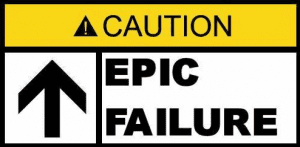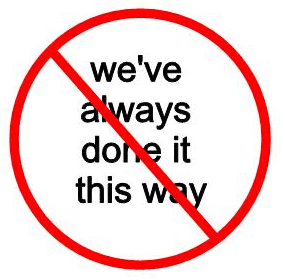 Last month I wrote a piece on the traits of high reliability organizations (HROs) and received a lot of very positive feedback. Thank you! This article will focus on the processes used by HROs. These processes definitely provide some valuable lessons for public safety agencies. Compare your organization and see if you may find some areas for improvement.
Last month I wrote a piece on the traits of high reliability organizations (HROs) and received a lot of very positive feedback. Thank you! This article will focus on the processes used by HROs. These processes definitely provide some valuable lessons for public safety agencies. Compare your organization and see if you may find some areas for improvement.
HROs realize manuals and policies are in a constant state of change. They are ever mindful of the complexity of the systems in which they work. When anomalies or problems arise in their systems, HROs work quickly to identify and eliminate any potential errors that could occur.
Maintaining situational awareness is important for staff at all levels because it is the best – and perhaps the only way – anomalies, potential errors, and actual errors can be quickly identified and addressed. Sensitivity to operations reduces the number of errors and allows errors to be quickly identified and fixed before their consequences become larger.
Reluctance to simplify
 HROs refuse to simplify procedures and operations to make things “easier.” They ignore the excuses and explanations offered for the difficulties and problems they face. HROs understand and accept the fact that their work is complex and do not accept simplistic solutions for challenges confronting complex and adaptive systems. They understand their systems can fail in ways that have never happened before and it is near impossible to identify all the ways in which their systems could fail in the future.
HROs refuse to simplify procedures and operations to make things “easier.” They ignore the excuses and explanations offered for the difficulties and problems they face. HROs understand and accept the fact that their work is complex and do not accept simplistic solutions for challenges confronting complex and adaptive systems. They understand their systems can fail in ways that have never happened before and it is near impossible to identify all the ways in which their systems could fail in the future.
This does not mean that HROs do not work to make processes as simple as possible. They do. What is does mean is all members are encouraged to recognize the range of things that might go wrong and not assume that failures and potential failures are the result of a single, simple cause. HROs strive to build diverse teams and use the experiences of team members who understand the complex nature of their field to continually refine their decision making methods.
Preoccupation with failure
 HROs spend a lot of time focusing on predicting and eliminating catastrophes rather than reacting to them. This is one lesson that seems to be of enormous value to public safety organizations. HROs constantly evaluate their performance as though they may have missed something that places employees, customers, citizens or the environment at risk.
HROs spend a lot of time focusing on predicting and eliminating catastrophes rather than reacting to them. This is one lesson that seems to be of enormous value to public safety organizations. HROs constantly evaluate their performance as though they may have missed something that places employees, customers, citizens or the environment at risk.
Near miss events are viewed as opportunities to improve current systems by examining strengths, determining weaknesses, and devoting resources to improve and address them. Near misses are not viewed as proof that the system has enough checks in it to prevent catastrophes. Such an approach serves to only encourage complacency rather than reliability. Instead, near miss events are viewed as opportunities to learn and understand what went wrong in the earlier stages of the process that could be prevented in the future through improved processes.
Deference to expertise
 HROs develop and nurture a culture where leaders defer decision making to the person with the most knowledge relevant to the issue they are confronting. The premise for this deference is logical. The most experienced member and the highest ranking member may not have access to the same information.
HROs develop and nurture a culture where leaders defer decision making to the person with the most knowledge relevant to the issue they are confronting. The premise for this deference is logical. The most experienced member and the highest ranking member may not have access to the same information.
In HROs, the culture is one that requires staff at all levels to be comfortable sharing information and concerns with others and to be supported, even commended, when they do so. This de-emphasis on hierarchy and formal chain of command is essential for organizations to prevent and respond to and correct problems quickly.
Resilience
 HROs pay close attention to how quickly they are able to contain errors and improvise when difficulties do occur. The goal is for the systems to continue to function despite setbacks. HROs are not naive. They assume that, despite all the safeguards they have in place, the system can fail in unanticipated ways.
HROs pay close attention to how quickly they are able to contain errors and improvise when difficulties do occur. The goal is for the systems to continue to function despite setbacks. HROs are not naive. They assume that, despite all the safeguards they have in place, the system can fail in unanticipated ways.
Where HROs differ from many public safety organizations is they prepare for their system failures by training members to perform quick situational assessments, working effectively as a team that defers to expertise, and practicing how they would respond to system failures.
Chief Gasaway’s Advice
 Compare your department’s processes to those used by HROs. Identify opportunities to make small incremental improvements that may bring you into alignment with those used by HROs. Developing and implementing the changes that create an HRO culture is not easy. Nor is it something that can be done by one person. It requires a commitment from across the organization and the will of leaders throughout the membership to embrace these processes.
Compare your department’s processes to those used by HROs. Identify opportunities to make small incremental improvements that may bring you into alignment with those used by HROs. Developing and implementing the changes that create an HRO culture is not easy. Nor is it something that can be done by one person. It requires a commitment from across the organization and the will of leaders throughout the membership to embrace these processes.
Discussions
 1. Compare the processes listed above to your department. Discuss how HRO principles may improve the safety of your members.
1. Compare the processes listed above to your department. Discuss how HRO principles may improve the safety of your members.
2. Discuss how your department could start to implement HRO processes into your operations.
3. Discuss the opportunities and challenges you would need to face and overcome to create a culture that embraces high reliability.
Additional resources
Baker, D.P., Day, R., & Salas, E. (2006). Teamwork as an essential component of high-reliability organizations. Health Serv Res. Aug;41(4 Pt 2):1576-98.
McKeon, L.M., Oswaks, J.D., & Cunningham P.D. (2006). Safeguarding patients: complexity science, high reliability organizations, and implications for team training in healthcare. Clin Nurse Spec. Nov-Dec;20(6):298-304; quiz 305-6.
Roberts, K.H. & Rousseau, D,M. (1989). Research in nearly failure-free, high-reliability organizations: having the bubble. IEEE Trans Engin Manage. May 36(2):132-9.
Weick, K.E., & Sutcliffe, K.M.(2001). Managing the unexpected: assuring high performance in an age of complexity. San Francisco: Jossey-Bass.
___________________________________________________________
The mission of Situational Awareness Matters is simple: Help first responders see the bad things coming… in time to change the outcome.
Safety begins with SA!
___________________________________________________________
Post your answers to the discussion questions or your comments to this article in the “Leave a Reply” box below.
If you want to send me incident pictures, videos or have an idea you’d like me to research and write about, contact me. I really enjoy getting feedback and supportive messages from fellow first responders. It gives me the energy to work harder for you.
Thanks,
Email: Support@RichGasaway.com
Phone: 612-548-4424
Facebook Page: www.facebook.com/SAMatters
LinkedIn: Rich Gasaway
Twitter: @RichGasaway
YouTube: SAMattersTV
iTunes: SAMatters



Contemporary fire service organizations confront many constraints. Chief among them is their own desire to maintain high-reliability and community leaders’ expectations of high performance. Reconciling what often seem to be contradictory mandates often proves challenging. How does an organization achieve both? Is it even possible?
High-performance and high-reliability organizations differ in their emphasis if not their expectations of how to fulfill their missions. The first emphasizes efficiency and the latter effectiveness. But HPOs and HROs also share a number of common characteristics: an aversion to failure, deference to expertise and an emphasis on teamwork and collaboration. They operationalize these goals quite differently, though. HROs maintain an intense inward focus on how they acquire, disseminate, act upon and evaluate new information. HPOs tend to maintain a focus on the external environment and its tendency to change rapidly, often unpredictably.
HROs tend to see the responsibility to minimize or control for the harms arising from the unexpected as the paramount responsibility of leaders at all levels (those with and without formal authority). HPOs, in contrast, see the need for leaders at every level to find opportunities in unexpected situations and capitalize on challenges rather than avoid them.
I would be interested in hearing your thoughts about how we can marry these two schools of organization thought in the fire service so we can achieve the best of both worlds.
Mark,
I don’t see efficiency and effectiveness as being mutually exclusive. I think there are organizations that can be one, the other, both or neither and I think it can vary throughout the organization and vary over periods of time with many things impacting both, including leadership, budgets and politics.
I’d like to let your questions sit for a bit and see if we can get some readers to share their views before I lay out more of my thoughts. Thanks for participating in the discussion. I really appreciate it.
Rich